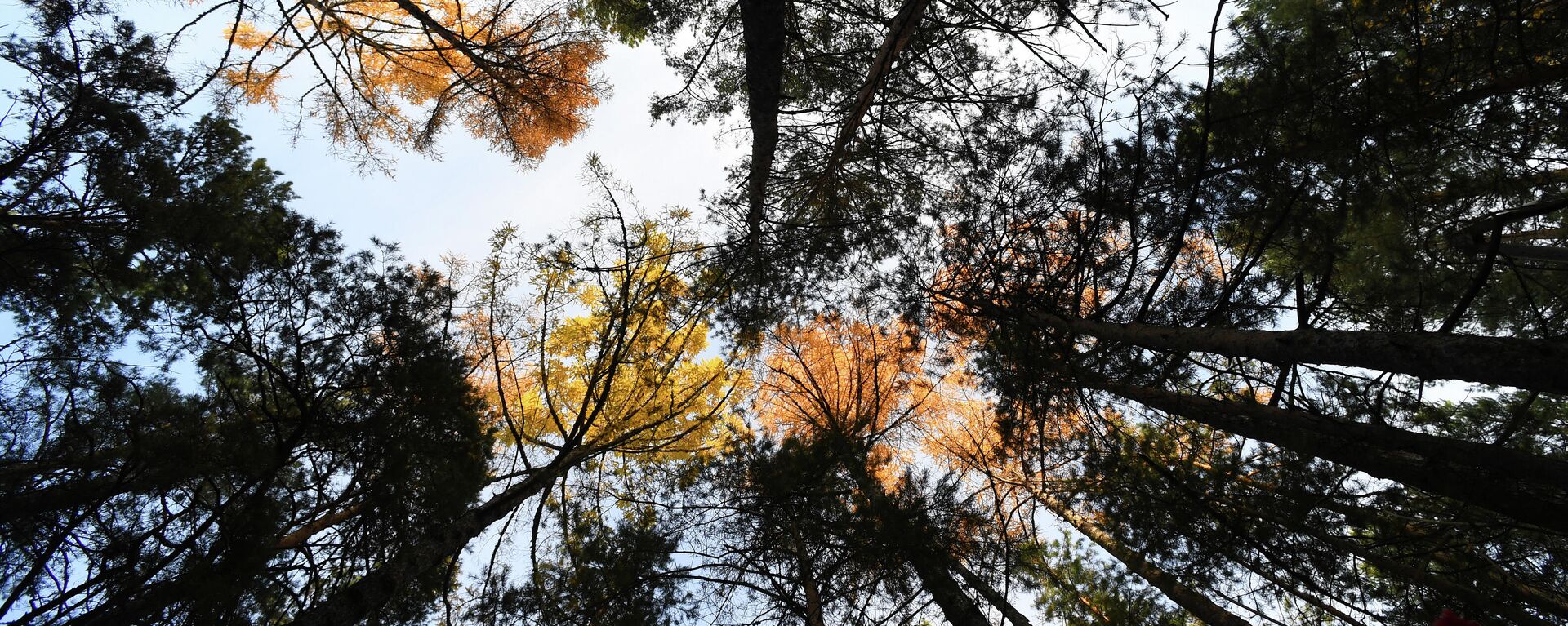Know-How: Who Actually Made Scythian 'Gold'
06:00 GMT 29.11.2021 (Updated: 20:16 GMT 19.10.2022)
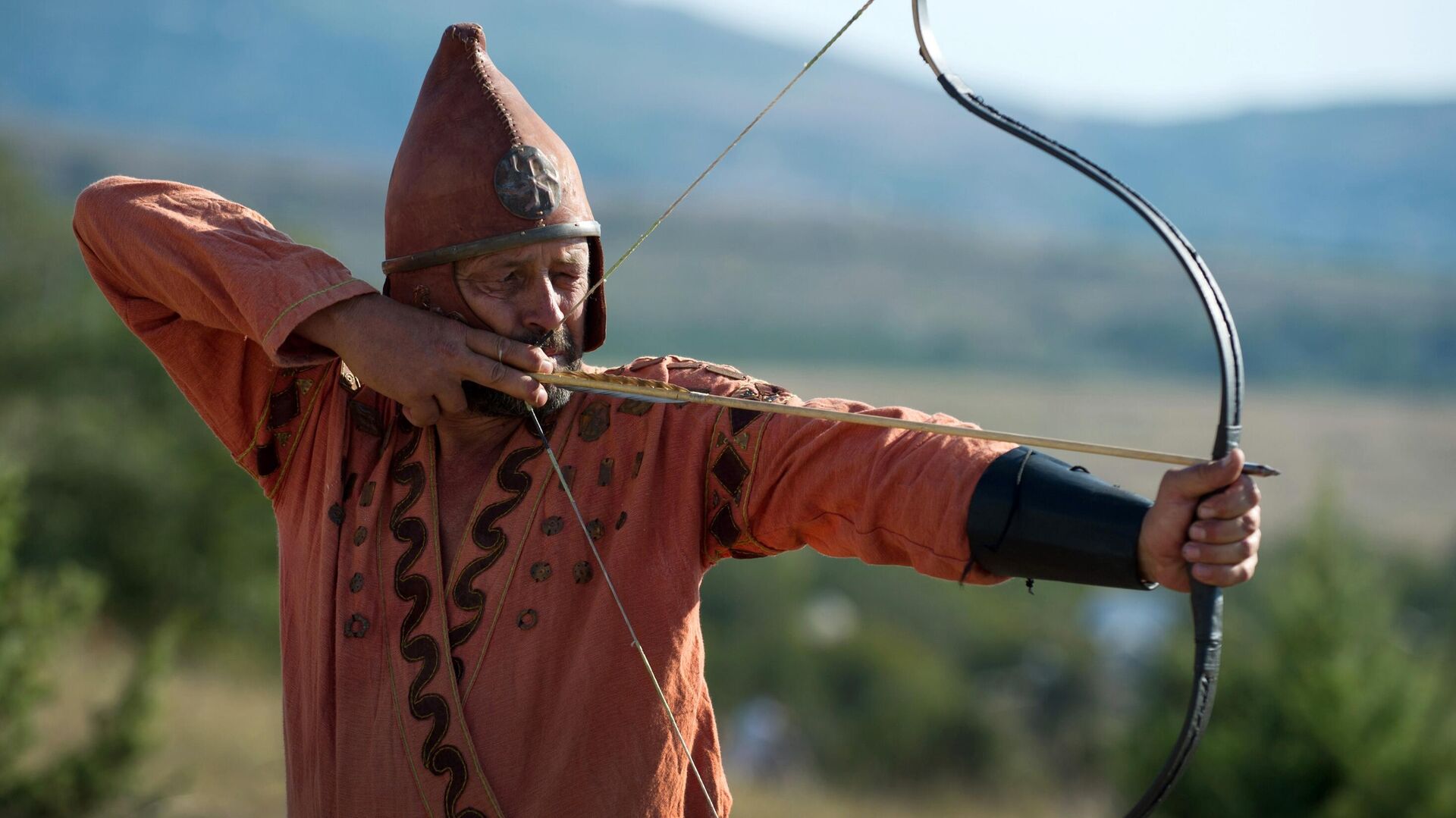
© Sputnik / Sergey Malgavko
/ Subscribe
Unique discoveries made this year by Russian archaeologists push the boundaries of the influence of “Great Scythia” a few hundred kilometres to the north. The authors, specialists at the Museum-Reserve “Kulikovo Field”, told Sputnik about the fate of the legendary Scythian civilisation and its neighbours, the life and economy of the early Iron Age.
North Steelmakers
Experts from the State Museum-Reserve “Kulikovo Field” have made certain discoveries that challenge what we think we know about the Scythian culture's boundaries and influence in the middle of the 1st millennium BC. The new artefacts were discovered in the spring and summer of 2021 during excavations of the ancient settlement of Gora Uslan’, 20km south of Tula.
The main discovery were traces of well-developed non-ferrous metallurgy: foundry moulds and production waste. Such unambiguous indications of foundry craft during this period were previously unknown in these northern territories, the scientists explained.
Researchers assume that the builders of the fortress were members of one of the so-called Scythoid cultures. These tribes include several groups of sitting populations in the forest-steppe zone, which, because of cultural and economic ties, were firmly integrated into the structure of the Scythian world.
According to archaeologists, a double wall fortified the settlement and the slope of the hill where the settlement was located and was artificially undercut to add to its steepness. Archaeologists found a bronze mirror, jewellery, arrowheads, dagger handles and several other objects dating back to between the 7th and 5th centuries BC.
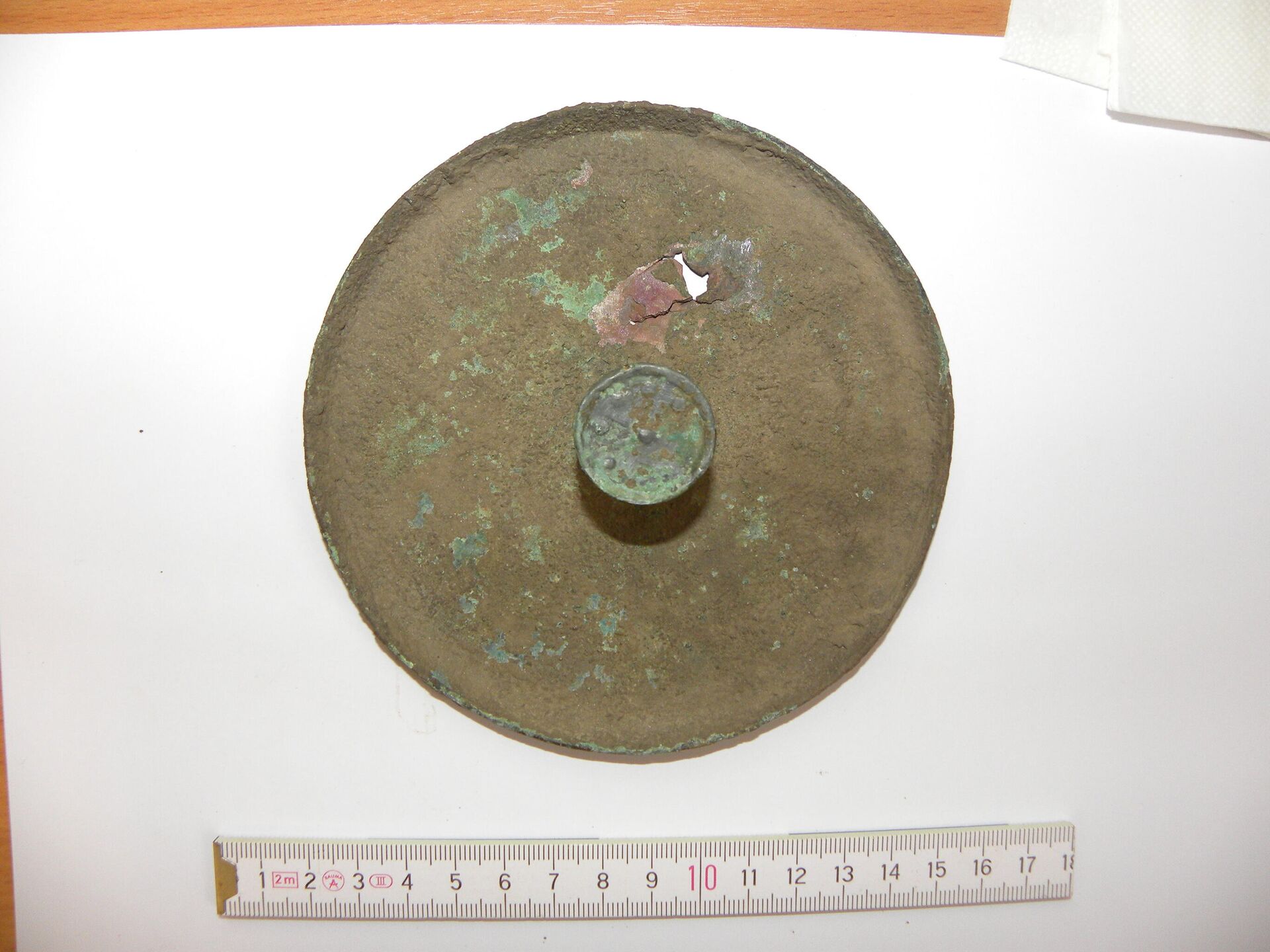
Scythian mirror, the first half of 6th century BC.
© Photo : Kulikovo Battlefield Museum
“The discoveries extend the northern boundary of the Scythian cultural influence by at least 300km. The borrowings of the Gora Uslan’ (Mount Uslan – ed. note Sputnik) inhabitants can be seen in the ornaments and shape of ceramics, in the way of dwellings are built and the set of everyday items,” said Evgeny Stolyarov, head of the archaeological research department at the State Museum-Reserve “Kulikovo Field”.
According to scientists, the local tribes were inferior to the more southern Scythian artisans, but they copied their style of living. For example, a unique horn hilt of a dagger found during excavations attests to this fact - it reproduces a rare type of bimetallic Scythian daggers, which apparently local craftsmen were unable to make out of metal.
Where Did Scythians Come From, Who Did They Become?
Scholars say that the Scythians in that period were the most vibrant culture of the northern Black Sea region, which had an enormous influence on all its neighbours. The Scythian world stretched from the mouth of the Danube in the west to Xinjiang in the east, but the question of the northern boundaries of its cultural influence has, by and large, remained a mystery to researchers.
“The forest and forest-steppe regions bordering the Scythian steppes were for many centuries, to varying degrees, covered by a 'veil of nomadic cultural traditions'. Often the Scythians appear to have acted as agents of cultural and technological innovation, their warfare was a source of inspiration for many younger peoples,” Evgeny Stolyarov said.

Scythian arrowhead (amulet), 6th-5th century BC.
© Photo / Kulikovo Battlefield Museum
According to scholars, the core of the Scythian culture was formed with Central Asian, West Asian and Greek elements in the Black Sea-Caspian steppes and Central Asia in the 8th and 7th centuries BC During the 5th to 3rd centuries, the Scythians had already fully mastered the steppe and forest-steppe of central Eurasia.
The Scythian civilisation had strong economic and cultural ties with the Greek colonies, which was reflected in their outlook and artistic tastes. The famous “Scythian gold”, jewellery found in burial mounds in the Crimea, was made chiefly by Greek artisans on behalf of the Scythian nobility.
“The Scythian-Siberian world was one of the most important cultural phenomena of the Early Iron Age, along with the Greeks, the Romans and the Celts. After the fall of the Crimean Late Scythian kingdom in the 3rd century AD, the remnants of their tribes mingled with various groups of the Great Migration period, apparently having some influence on the ethnogenesis of Caucasian, Turkic and probably some Slavic tribes,” Stolyarov explained.

Five Different Civilizations Used Ancient Burial Ground in Crimea and Archeologists Have No Idea Why
16 September 2020, 18:10 GMT
New Culture on the Map
The Oka-Don watershed, where the builders of Gora Uslan’ lived, has for several millennia been a corridor for traders and settlers to reach the forest zone from the Black Sea steppes.
“The inhabitants of the region in the Early Iron Age built well-fortified settlements and houses with pillars which were clayed according to the steppe tradition. Their main occupations were, probably, stockbreeding and various crafts. Unfortunately, we have no written evidence of this population, nor do we have any data on their ethnicity,” Stolyarov added.
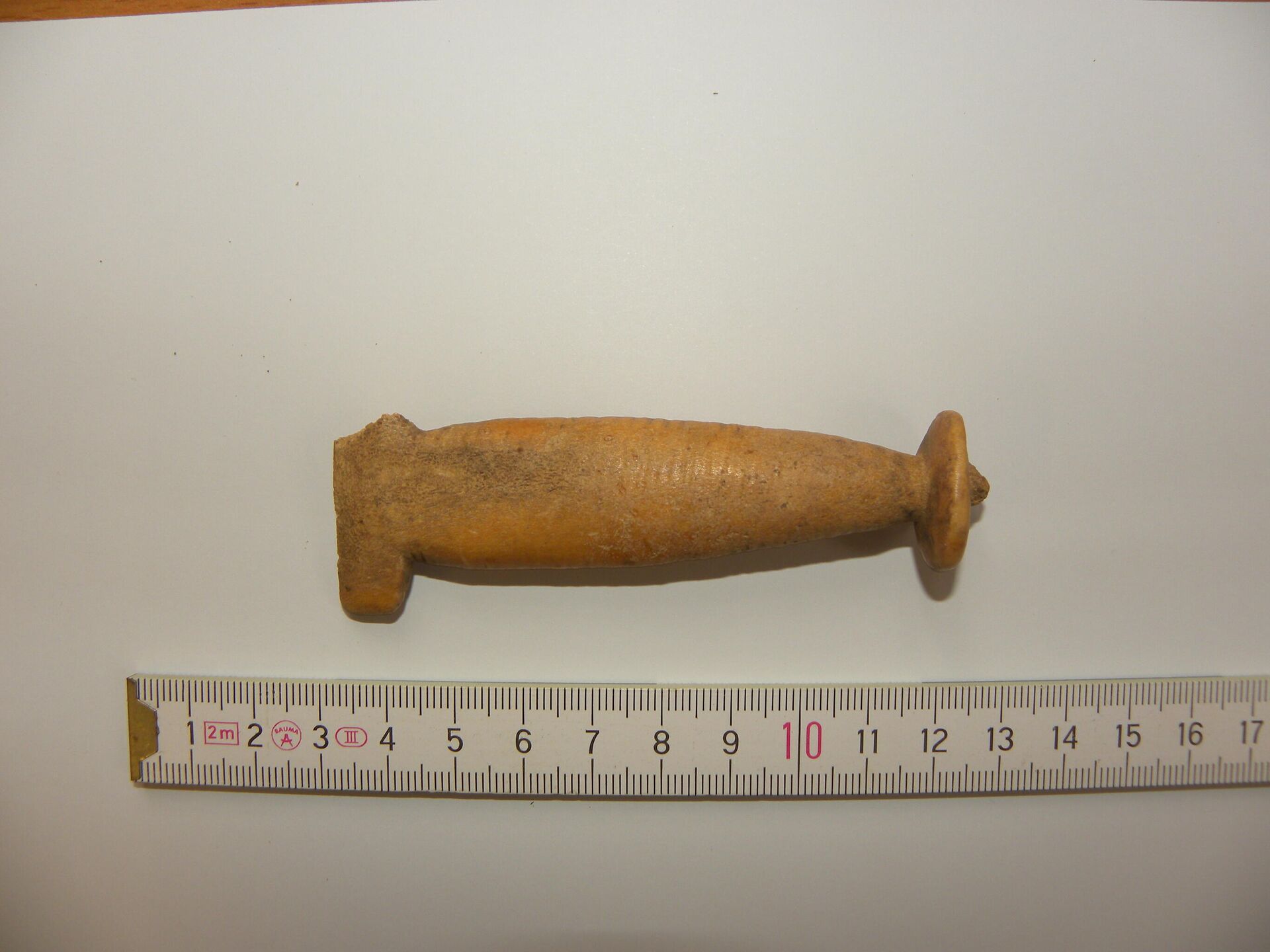
Dagger handle, 6th century BC, (horn), imitation of bimetallic daggers
© Photo : Kulikovo Battlefield Museum
Until recently, it was believed that the indigenous population here in the middle of the first millennium BC were the eastern Balts, distant ancestors of the modern Baltic peoples. According to scientists, the argument for this was the large number of ancient names of rivers and lakes, which were of Baltic origin.
However, a study in recent years has shown that the area was culturally diverse in the Early Iron Age, and finds at Gora Uslan’ have confirmed the role of the Scythians as a kind of regional “cultural leader”.
“The designation of the forest tribes between the Dnieper and Seim as ‘Balts’ is becoming increasingly conventional. The characteristics of the material culture studied during the excavations of recent years are not characteristic of 'ancient Balts'. However, the finds of the Scythian type are still isolated and it is probably most correct to call this region the 'world of forest cultures', which was included in the orbit of the cultural influence of the 'Great Scythia’,” Stolyarov explained.
Scientists hope to expand exploration of the forest-steppe Scythoid cultures to put the Oka-Seim culture, probably the northernmost one, in its rightful place on the historical map.
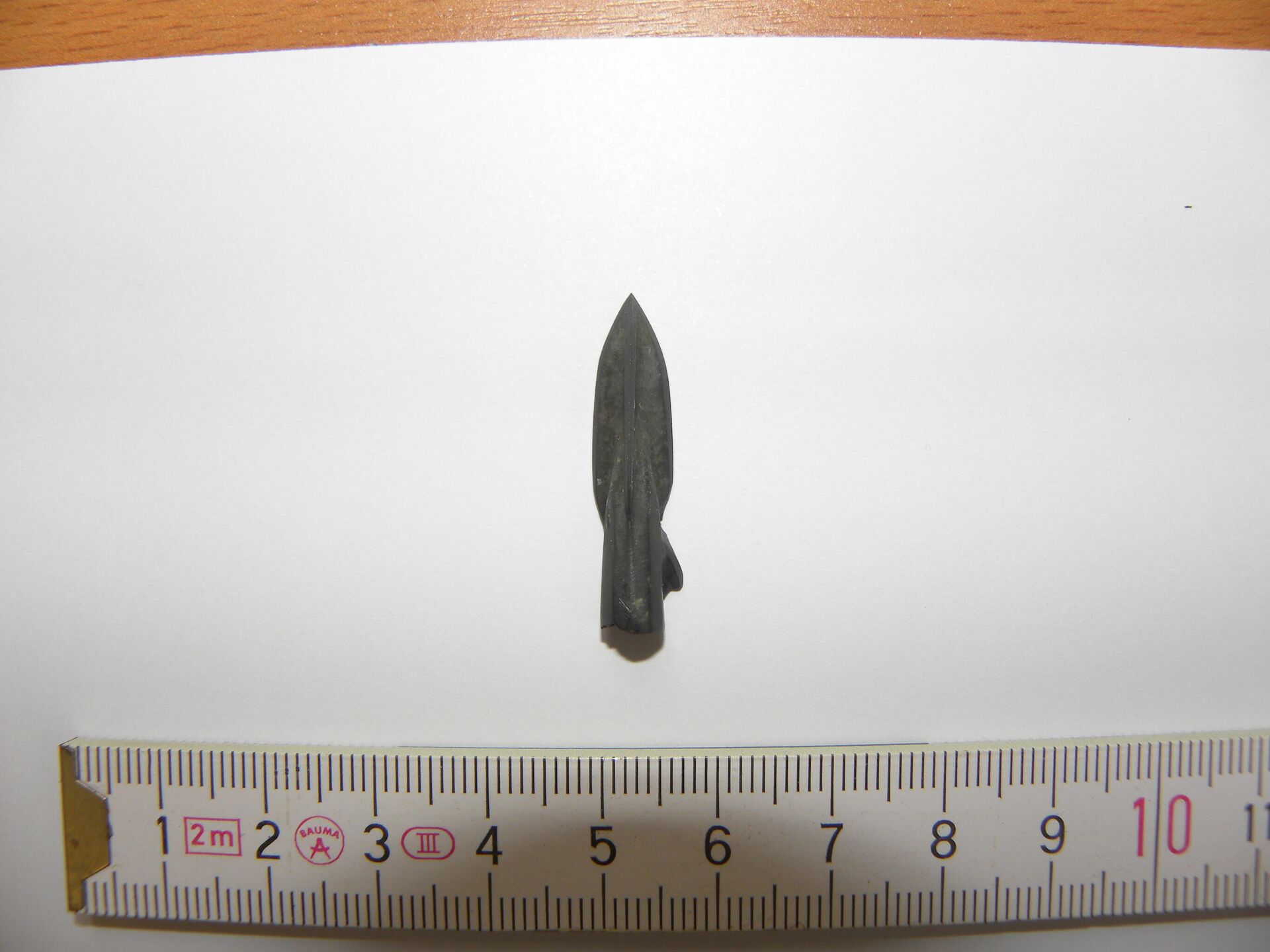
Scythian arrowhead, 6th-5th century BC.
© Photo : Kulikovo Battlefield Museum

